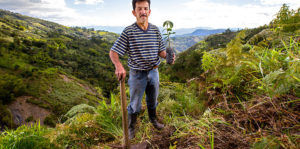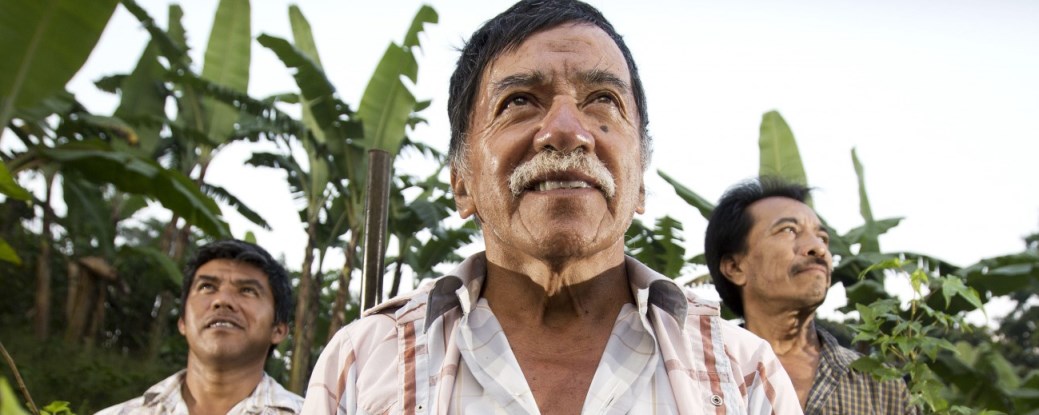The new trend known as carbon insetting does more than just offset carbon emissions — it helps companies boost resilience and care for the ecosystems that provide their raw materials.
Ten years ago, serendipity set Tristan Lecomte on his path to planting millions of trees around the world. Lecomte was CEO of the French organic and fair trade company Alter Eco, and his eco-conscious consumers were pressing him about his actions on climate change.
 So Lecomte calculated his company’s carbon footprint and began planting trees in partnership with the Peruvian farmers who supplied Alter Eco with cocoa to both offset the company’s emissions and help the farmers. The 5,000 hardwood trees they planted helped restore the soil, biodiversity and water systems on the cocoa farms, while giving the farmers another source of income. “I love nature and I thought it made sense for the farmers,” says Lecomte about the tree planting. “I never knew it would become my work.”
So Lecomte calculated his company’s carbon footprint and began planting trees in partnership with the Peruvian farmers who supplied Alter Eco with cocoa to both offset the company’s emissions and help the farmers. The 5,000 hardwood trees they planted helped restore the soil, biodiversity and water systems on the cocoa farms, while giving the farmers another source of income. “I love nature and I thought it made sense for the farmers,” says Lecomte about the tree planting. “I never knew it would become my work.”
But Nespresso, a division of Nestlé, was sourcing coffee from the same Peruvian region and asked Lecomte for help with a similar initiative, and what began as 5,000 trees for Alter Eco in 2006 grew into a massive public-private partnership, with 3 million trees planted by farmers, an additional 40 million pledged by the government, and the creation of a 2.4 million hectare (5.9 million acre) biosphere reserve in the Peruvian Amazon.
And out of that came PUR Projet, along with their concept of carbon insetting. Their mission is “Regenerating and preserving the ecosystems through high value agroforestry and other ecosystem regeneration projects designed by and for local communities.”
 Insetting represents a vision shared by a growing number of organizations regarding how companies can balance their relationship with the environment upon which we all depend. By engaging in integrated socio-economic and environmental projects, within their supply chains, these organizations are moving to secure the development of a more sustainable future.
Insetting represents a vision shared by a growing number of organizations regarding how companies can balance their relationship with the environment upon which we all depend. By engaging in integrated socio-economic and environmental projects, within their supply chains, these organizations are moving to secure the development of a more sustainable future.
Insetting aims to enhance the competitiveness of a company by regenerating and conserving the ecosystems and resources required to support their supply chains. It consists of internally offsetting the negative social and environmental impacts associated with their business (climate, water, biodiversity, soils, social…).
When done correctly, Insetting is a powerful tool that can create shared value along the entire value chain of a company. Innovation in Insetting truly creates positive on the social, environmental and business impacts.
Unlike traditional offsetting unrelated to company’s activities, Insetting compensates impacts (climate, water…) within the company’s own business value chain, also creating shared value for the company and its ecosystem, and all stakeholders. This is a breakthrough innovation which will contribute to move Corporate Sustainability out of the niche market to become a standard.
The method for Insetting is progressive and open, generally starting with the evaluation, reduction and insetting of the GHG footprint of an organization. Progressively, other impact metrics are then incorporated into the project, including: adaptation to climate change, soil, water, biodiversity, resources & energy, socio-economic development, as well as corporate impacts and societal change.
The ultimate goal is to create a net positive impact through evaluating, reducing and progressively compensating all of these impacts. All projects are developed within the sphere of influence of the Organization, hence allowing for the incorporation of its own vision, values, management system, program and projects in place.
All photos courtesy PUR Projet.

